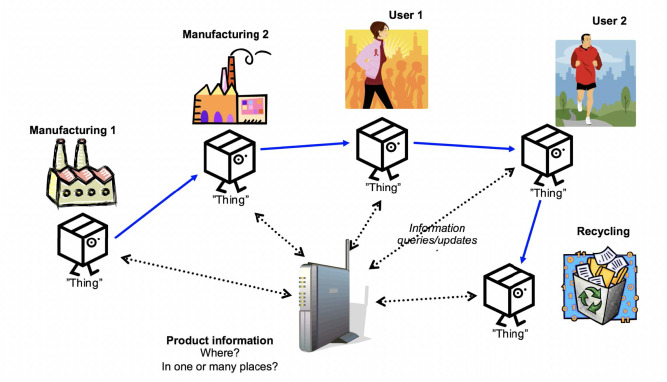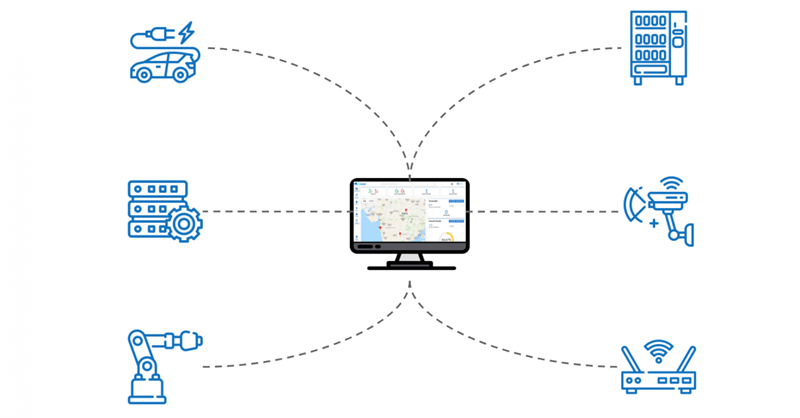EDHOC is a cutting-edge authenticated key exchange protocol designed to provide enhanced security and reduced overhead for IoT devices. In the rapidly evolving landscape of Internet of Things (IoT) technologies, ensuring the security of communication between devices is paramount. Traditional key exchange protocols can be cumbersome and resource-intensive, making them less than ideal for the constrained environments in which many IoT devices operate.
EDHOC addresses this challenge by offering a lightweight solution that maintains a high level of security without sacrificing efficiency. By streamlining the key exchange process and minimizing the computational burden on devices, EDHOC enables IoT devices to establish secure communication channels quickly and effectively.
This protocol is particularly well-suited for resource-constrained devices such as sensors, actuators, and other IoT components that have limited processing power and memory. With EDHOC, IoT devices can securely exchange keys and authenticate each other without incurring unnecessary overhead, making it an ideal solution for securing the vast networks of interconnected devices that characterize the IoT ecosystem.
By implementing EDHOC, IoT developers can ensure that their devices are protected against unauthorized access and data breaches, thereby safeguarding the integrity and privacy of the information they transmit. As the IoT continues to expand and evolve, the need for lightweight and efficient security protocols like EDHOC will only grow more pressing, making it a valuable tool for enhancing the overall security posture of IoT ecosystems.

Key Features of the EDHOC Protocol
The Efficient Distribution of Hashed Online Content (EDHOC) protocol is a cryptographic protocol that provides a secure and efficient way to establish a shared secret between two parties. One key feature of the EDHOC protocol is its ability to support a variety of different cryptographic algorithms, allowing for flexibility in implementation.
This means that parties can choose the most suitable cryptographic algorithms for their specific use case, whether it be for low-power devices or high-security applications. Another important feature of the EDHOC protocol is its support for session resumption, which allows parties to quickly re-establish a shared secret without going through the entire key exchange process again.
This can be particularly useful in scenarios where frequent communication sessions need to be established quickly and securely. Additionally, the EDHOC protocol is designed to be lightweight and efficient, making it suitable for use in resource-constrained environments such as IoT devices. Its minimal message sizes and low computational overhead make it an attractive option for applications where efficiency is a priority. Overall, the EDHOC protocol offers a range of key features that make it a versatile and secure option for establishing shared secrets in various cryptographic applications.
How EDHOC Enhances IoT Security
In the rapidly expanding realm of the Internet of Things (IoT), security is a paramount concern. With the proliferation of connected devices in various industries, the need for robust security measures to protect sensitive data and ensure the integrity of communications is more important than ever. One technology that is proving to be instrumental in enhancing IoT security is the use of the Ephemeral Diffie-Hellman Over COSE (EDHOC) protocol.
EDHOC provides a secure and efficient way for IoT devices to authenticate and establish secure communication channels. By utilizing cryptographic techniques such as key exchange and authentication, EDHOC ensures that only authorized devices can access sensitive data and that communications remain confidential and tamper-proof. Furthermore, EDHOC’s lightweight design makes it ideal for resource-constrained IoT devices, allowing for secure communication without compromising performance or efficiency.
Overall, the implementation of EDHOC in IoT systems enhances security by providing a strong foundation for secure communication and authentication, ultimately safeguarding against potential threats and vulnerabilities that could compromise the integrity of IoT networks. As the IoT ecosystem continues to grow and evolve, the adoption of technologies like EDHOC will be crucial in ensuring that devices remain secure and protected from malicious actors looking to exploit vulnerabilities for their own gain.

Reducing Overhead with EDHOC
Reducing overhead with EDHOC is a vital consideration for businesses looking to streamline their operations and increase efficiency. By implementing EDHOC, companies can significantly reduce costs associated with administrative tasks, such as data entry, paperwork, and manual processes. This innovative technology automates many of these time-consuming tasks, allowing employees to focus on higher-value activities that drive growth and profitability.
EDHOC also helps businesses eliminate waste and inefficiencies in their operations, leading to a more streamlined and cost-effective business model. By leveraging the power of EDHOC, companies can achieve significant cost savings and improve their bottom line. In addition, EDHOC can help businesses adapt to changing market conditions and stay competitive in today’s fast-paced business environment.
By reducing overhead with EDHOC, companies can allocate resources more effectively and invest in areas that will drive long-term success and sustainability. Overall, implementing EDHOC is a smart business strategy that can help companies thrive in an increasingly competitive marketplace.
Comparing EDHOC with Other Key Exchange Protocols
EDHOC, or the Efficient Distributed Key Exchange Protocol, stands out among other key exchange protocols due to its unique approach to security and efficiency. When comparing EDHOC with other protocols such as Diffie-Hellman and RSA, one can see that EDHOC offers several advantages. For instance, EDHOC is specifically designed for constrained environments, making it ideal for Internet of Things (IoT) devices that have limited processing power and memory.
Additionally, EDHOC provides forward secrecy, meaning that even if a long-term key is compromised, past communications remain secure. This feature is crucial for maintaining the confidentiality of sensitive information. In contrast, Diffie-Hellman and RSA do not offer forward secrecy by default. Furthermore, EDHOC uses a lightweight message format and supports multiple cryptographic algorithms, allowing for flexibility and compatibility with various applications.
This flexibility sets EDHOC apart from other protocols that may have more rigid specifications. Overall, EDHOC’s focus on efficiency, security, and flexibility make it a strong contender in the realm of key exchange protocols. While each protocol has its own strengths and weaknesses, EDHOC’s unique features make it a valuable option for securing communications in constrained environments. As technology continues to evolve, it will be interesting to see how EDHOC and other key exchange protocols adapt to meet the changing needs of the digital landscape.

Implementing EDHOC in IoT Devices
Implementing EDHOC in IoT devices is a crucial step towards enhancing the security and privacy of these interconnected devices. EDHOC, which stands for Ephemeral Diffie-Hellman Over COSE, is a lightweight and efficient key exchange protocol that enables secure communication between IoT devices. By incorporating EDHOC into IoT devices, manufacturers can ensure that sensitive data transmitted between devices is encrypted and protected from potential attackers.
This protocol also allows for secure authentication of devices, ensuring that only authorized devices can communicate with each other. Additionally, EDHOC helps to minimize the computational and energy resources required for key exchange, making it an ideal solution for resource-constrained IoT devices. Overall, implementing EDHOC in IoT devices is a proactive measure that can significantly improve the security and reliability of IoT networks, ultimately enhancing the overall functionality and usability of these interconnected systems.
As the number of IoT devices continues to grow, it is essential for manufacturers to prioritize security measures such as EDHOC to safeguard against potential threats and vulnerabilities. By taking proactive steps to secure IoT devices, manufacturers can help to create a more trustworthy and resilient IoT ecosystem for consumers and businesses alike.
